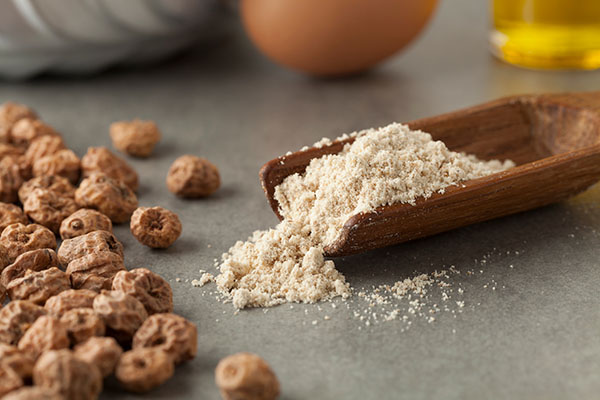
Advertisement
Monosodium glutamate (MSG) is a food additive that provides a savory flavor called umami. It is commonly used in Chinese cooking but is also found in fast food and processed foods. Pizza, fried chicken, theater popcorn and cold cuts are just some of the many junk foods that contain MSG.
MSG and the Chinese restaurant syndrome
MSG is perceived as an “artificial ingredient,” but according to Anju Mobin, managing editor of the website Best of Nutrition, it is actually a naturally occurring amino acid that can be found in foods such as tomatoes. However, the MSG in processed foods and fast food is man-made since it is extracted and fermented.
The use of MSG is controversial because a handful of people are sensitive to the flavor enhancer. Alan Watson, a 65-year-old retiree from South Carolina, says he has had severe reactions to MSG for more than 15 years.
“If I have even a little bit of MSG in food it starts as a headache in the base of my neck and moves up to the top of my head,” Watson told Healthline. “It’s almost like a full-blown migraine that can last all day.”
Headache is just one of the many symptoms linked to MSG sensitivity. Collectively, these symptoms are known as the Chinese restaurant syndrome, or MSG symptom complex, and they include:
- Flushing
- Sweating
- Facial pressure or tightness
- Numbness, tingling or burning in the face, neck and other areas
- Rapid, fluttering heartbeats
- Chest pain
- Nausea
- Weakness
The Food and Drug Administration classifies MSG as “generally safe,” and researchers have yet to find definitive evidence that MSG is harmful to health. Still, Watson says that the use of the food additive should cease.
“There’s really no purpose for MSG other than flavoring, so I wish restaurants would stop using it completely. At this point I will only eat Chinese food if the restaurant assures me there is no MSG anywhere in the building.”
MSG often added to processed food and fast food for umami flavor
Despite the adverse reactions associated with it, MSG is still widely used because it gives food a delicious umami flavor. Umami is considered the fifth taste and corresponds to the flavor of glutamates.
According to Mobin, MSG makes food taste good even with less salt and fat. Heloise Blaure, a chef and blogger for the website Home Kitchen Land, considers the food additive the “best source of umami flavor.”
“Making something taste sweet or salty is easy. All you have to do is add some sugar or salt to your recipe,” Blaure told Healthline. “But enhancing the umami flavor in your food can be far more difficult.”
Ellie Golemb, chef of Culinarie Kit and Ghost Vegan, agrees, noting that MSG “adds a wonderful burst of umami flavor to dishes.”
But if MSG is found naturally in many foods, why are restaurants drawn to the food additive? Blaure believes this is because foods with the strongest umami flavor, such as wild elk and grass-fed beef, can be quite expensive. In addition, the food on sale at groceries are usually not as flavorful as high-quality meat.
“Sprinkling a bit of MSG on your dish gives it a much meatier, more savory appeal,” she said.
MSG is the not-so-secret ingredient in fast food and processed foods. If you’re wondering why you can’t recreate the popcorn sold at movie theaters, it’s because the food is artificially flavored with this toxic ingredient.
Chemist and nutritionist Paul Jenkins points out that MSG has seamlessly worked its way into almost every crack and crevice of the food industry.
“Although it is typically associated with Chinese cuisine, this is no longer the case. MSG can be found in many different foods and is especially prevalent in canned and processed foods.”
Indeed, even fast-food restaurants have started using MSG to make their already unhealthy menus even more flavorful. McDonald’s, Popeyes and Chick-fil-A are just some of the fast food chains that use the food additive.
Foods that usually contain MSG include:
- Fried chicken
- Popcorn
- Pizza
- Sausage
- Cheese
- Canned and packet soups
- Seasonings
- Powdered gravy granules
- Stock and bouillon cubes
- Cold meat cuts
- Table sauces like soy sauce
- Salty snacks
- Prepackaged sandwiches
- Instant noodles
Is there a natural alternative to MSG?
Basil Yu, chef and owner of the ramen popup restaurant Yagi Noodles in Newport, Rhode Island, says that he uses natural products like kelp and shiitake mushrooms to give his dishes an umami flavor. He notes that these natural MSG substitutes make the flavor more nuanced and complex.
Yu says that chefs use MSG less frequently, but that’s not the case with fast food chains and food companies. “Even though it’s not used much in commercial kitchens, I see it more and more everywhere in processed foods.”
MSG make dishes more savory, but it can also trigger an adverse reaction in some people. Avoid foods with MSG, such as most processed foods and fast food, to avoid the Chinese restaurant syndrome. You can use natural alternatives like kelp, seaweed and shiitake mushrooms to add an umami flavor to your dishes.
Sources:
Advertisements







